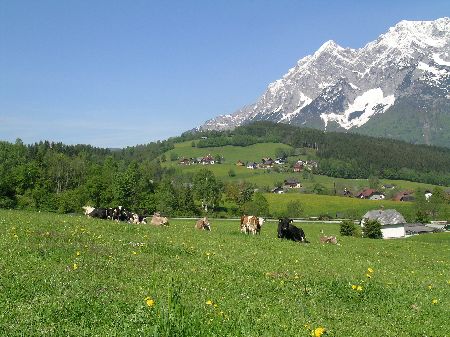In practice, many farms experience fluctuations in milk production and milk ingredients during these months. This is a sign of errors in feeding. Overall, grazing in Austria is declining, although the points listed above are certainly one of the reasons for this. A move away from pasture farming can be observed, particularly among those farms that strive for a high milk yield per cow. In this context, however, the agricultural policy framework must also be taken into account.
As part of the negotiations on Agenda 2000, Austria renounced a specific increase in the quota in mountain areas in favor of an extensification premium for dairy cows in mountain areas. In order to be able to claim this premium, at least 50% of the reported forage areas must be declared as pastureland and the RGVE stock per hectare must not exceed 1.4. From this perspective, a further decline in grazing could be prevented, at least in the medium term. Pasture feed is also a very cost-effective feed. In addition, the expectations of consumers - pasture is classified as very close to nature - should not be neglected.
There are practically no scientific studies on grazing dairy cows under Austrian production conditions. The aim of the present project was therefore to compare green feeding on the pasture (day pasture or day and night pasture) and in the stable. The effects on feed intake as well as on the nutrient supply and performance of dairy cows should be examined. In addition, the behavior of the animals on the pasture over the course of the day and depending on climatic factors should be examined using video recordings.
The studies were carried out in the form of a Latin square with 8 dairy cows (4 Brown Swiss, 2 Holstein Friesian and 2 Simmental) over 12 weeks. The influence of day, day and night grazing or stable keeping on feed intake, nutrient supply and milk production was examined. In addition, the grazing behavior of the dairy cows was also recorded. The basic feed ration consisted of 60% green fodder and 20% each of hay and corn silage. From 13 kg milk yield, 1 kg of concentrate was fed for every 2 kg of additional milk yield.
The basic and total feed intake as well as the nutrient intake, nutrient supply and milk production did not differ significantly between the 3 experimental groups. However, the day grazing group consumed significantly less forage than the day and night grazing group and the stable group. In contrast, hay intake was significantly increased during daytime grazing. The green fodder losses were almost twice as high in pasture farming (24 to 30%) than in stable farming (16%). Despite greater selection options, no higher forage intake could be determined on pasture. The reasons for this are the overall very good quality of green fodder, the lack of time for half-day grazing and negative environmental influences on the pasture.
During the behavioral studies, an intensive eating phase was found after the grazing. The animals spent around 50 minutes per hour consuming food. Over the course of the day, there was a continuous decrease in eating time to just over 30 minutes per hour.
However, after grazing in the evening, feeding behavior decreased significantly until darkness fell and was only slightly pronounced at night (15 min/hour). In addition, weather influences on the behavior of the animals could also be determined. When it rained, but also when daytime temperatures rose, the animals stood more and their lying behavior decreased.







